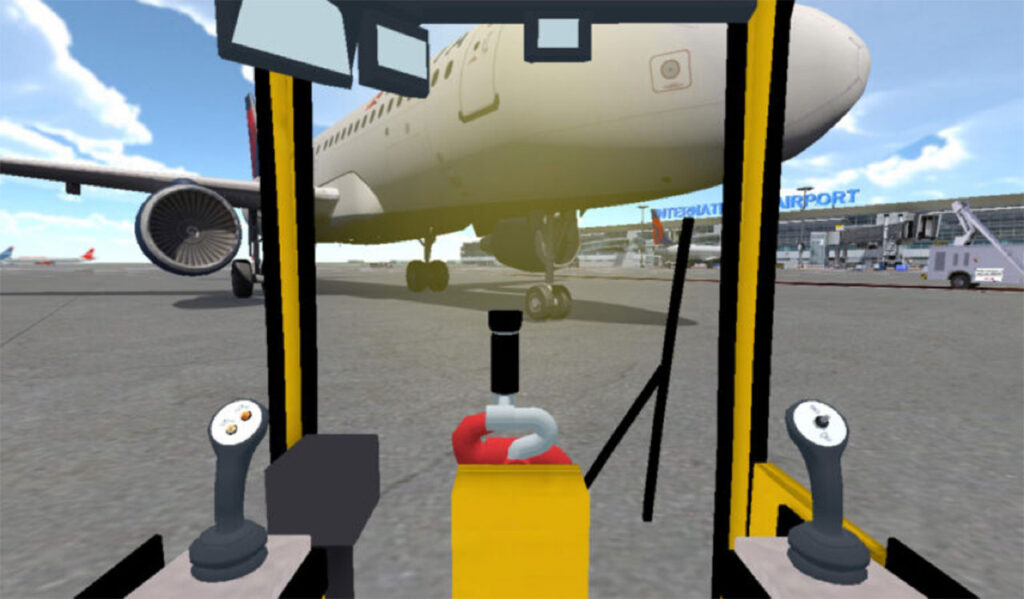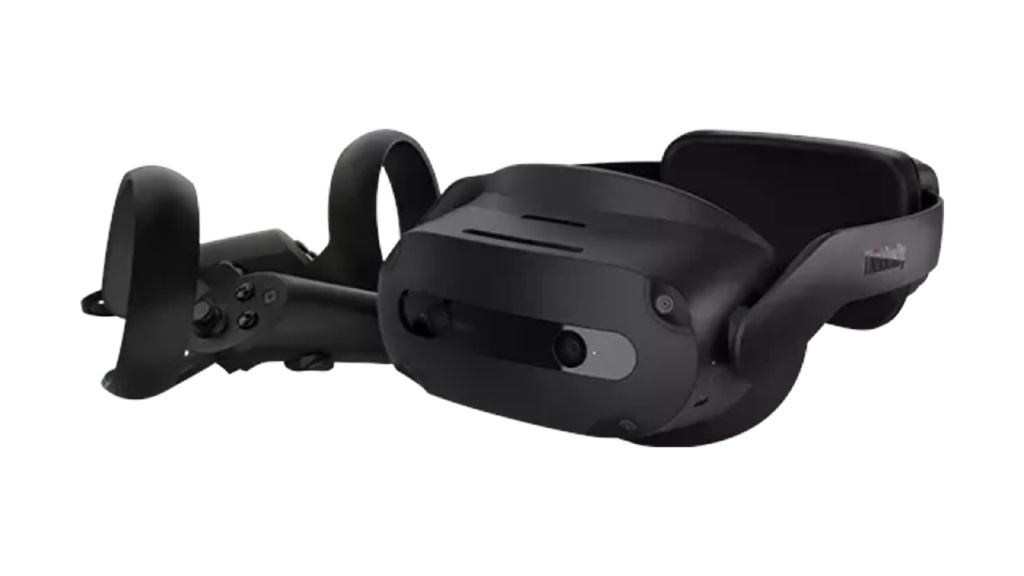Traditional training can be costly, risky, and often fails to engage employees. VR training offers a new, effective way to teach critical skills at scale. But the big question remains—does VR training actually deliver a strong return on investment (ROI)?
In this ArborXR guide, answer that very question. Plus, we’ll explore the real costs of VR training programs and share a simple process for measuring the ROI of your own VR training programs.
Does VR Training Deliver Positive ROI?
The short answer? Yes.
VR training often delivers significant positive ROI by driving real business outcomes. VR-based learning solutions offer distinct advantages that directly impact the bottom line, including:
Faster Learning and Time Savings
Higher Knowledge Retention and Skill Application
Reduced Operational Costs and Enhanced Safety
Scalability and Flexibility for Enterprise Growth
Faster Learning and Time Savings
VR training accelerates skill development by immersing employees in realistic, hands-on scenarios. This engaging approach enables learners to grasp complex concepts more quickly.
A recent PwC study found that VR learners completed training 4 times faster than classroom learners on average. Faster training means less time away from production—and significant savings. Companies like Smooth Soft, a VR training provider for quick service restaurants (QSRs), have leveraged this speed advantage to cut onboarding time by up to 90%.
Clik here to view.

By partnering with ArborXR’s VR device management platform, Smooth Soft reduced training for new hires from 30-40 hours down to just 3-6 hours.
Higher Knowledge Retention and Skill Application
The immersive nature of VR training leads to higher knowledge retention compared to lecture-based or video training. Learners are fully engaged, and multi-sensory experiences activate more cognitive processes for stronger encoding into long-term memory.
Research backs this up. A study from the University of Maryland found that participants who learned in VR had a recall accuracy of 84%, compared to 75% for those who learned the same material on a desktop display.
This higher retention rate directly translates to improved job performance. When employees remember more of their training, they’re more ready to apply those skills on the job. This leads to fewer mistakes, higher quality work, and increased productivity.
Reduced Operational Costs and Enhanced Safety
VR training eliminates many operational expenses associated with traditional training, like:
- Travel
- Instructors
- Venues
- Physical equipment
Trainees can learn critical skills safely through realistic virtual simulations, reducing risks and costs from real-world accidents during practice. Delta Air Lines, for example, saved millions by virtualizing its aircraft deicing training program with help from Futurus and ArborXR.
Clik here to view.

The VR solution reduced fluid usage and cut trainer/employee travel expenses significantly.
Scalability and Flexibility for Enterprise Growth
As organizations expand, delivering consistent training becomes a logistical challenge.
With VR, companies can quickly scale standardized programs across dispersed workforces. Cloud-based VR platforms like ArborXR enable efficient content deployment to hundreds of headsets, while all-in-one device management simplifies headset setup and software updates.
This allows L&D teams to focus on building effective learning experiences, not wrestling with tech logistics.
Calculating the Real Costs of VR Training
Hardware Costs
The foundation of any VR training program is hardware. At a minimum, you’ll need headsets and controllers. Entry-level VR headsets range from $300 to $700 per unit, while top-of-the-line enterprise-grade devices can exceed $3,000.
Clik here to view.

The Meta Quest 3S, an entry-level option, costs around $299. In contrast, enterprise-grade devices like the Lenovo ThinkReality VRX, priced at about $1,200, offer advanced features for professional use cases and settings.
Beyond the initial purchase, consider these additional costs:
- Maintenance and Upgrades: Hardware requires regular updates, and devices may need replacement as technology evolves. Plan for these expenses.
- Accessories: Items like cases, stands, or external sensors can add to the total cost.
Software and Content Development
VR training effectiveness depends on the quality of the content. You have two main options:
- Pre-Built Content: Off-the-shelf modules, like safety or customer service simulations, offer an affordable starting point. Costs range from $5,000 to $20,000 on average.
- Custom Content: Tailored scenarios designed for your company’s needs can cost $30,000 to $150,000 or more. Custom content provides a highly immersive experience but at a higher price.
Many companies begin with pre-built content and invest in custom solutions once they prove ROI. For custom development, consult our XR Directory to find the best enterprise XR developers for your VR program.
Device & Content Management
To effectively manage your VR training program, you’ll need a comprehensive platform that handles content distribution, device management, and user admin. That’s where XR MDM solutions like ArborXR come in.
We offer key features like:
- Content Distribution: Easily deploy and update training modules to all your devices remotely. Ensure everyone has access to the latest content.
- Device Management: Monitor, track, and control your VR headsets from a centralized dashboard. Keep your devices secure and up-to-date.
- User Administration: Manage user access, track progress, and assess performance. Controls the in-headset experience with single and multi-app kiosk modes.
Subscription fees range from $10 to $30 per device per month, depending on the features and scale you need.
Deployment and Onboarding Costs
Rolling out a new training program involves more than just buying equipment. You’ll need resources for device setup, software integration, and staff training:
- Setup and Integration: Budget for initial setup costs if you require IT support for configuration and integration.
- Onboarding and Training: Allocate time to teach employees how to use the VR equipment, especially if they’re new to the technology.
ArborXR can also be very helpful here. Our user-friendly platform minimizes onboarding time, allowing you to get started faster and reduce the need for extensive training.
Hidden Costs
Be aware of less obvious expenses:
- Maintenance and Repairs: Damaged devices can disrupt training. Factor in repair costs and have a replacement plan.
- Content Updates: VR modules may require periodic updates to stay current with regulations or industry standards.
Clik here to view.

With ArborXR as your XR device management platform, you enjoy consistent updates and very minimal downtime, reducing maintenance costs significantly. That’s why we’re trusted by over 3,000 companies worldwide.
How to Measure the ROI of VR Training
To calculate the ROI of your VR training program, you need to compare the total costs to the quantifiable benefits.
Here’s a step-by-step approach:
1. Calculate Total Costs
Include hardware expenses, software and content costs, device and content management platform fees, deployment and onboarding expenses, and hidden costs like maintenance, repairs, and updates.
2. Identify (and Quantify) Tangible and Intangible Benefits
Measure time savings from faster training completion, reduced travel and instructor costs, productivity gains, etc. Then, try to quantify these benefits as tangible monetary benefits. This often requires estimation and the amount of time you should spend on this step depends on how accurate you need the ROI analysis to be.
3. Calculate ROI
Use the formula ROI = (Benefits – Costs) / Costs x 100. For example, if your VR training costs $100,000 and generates $150,000 in benefits, your ROI is 50% or $1.50 return per dollar invested
Minimize VR Training Costs and Maximize ROI With ArborXR
A clear analysis of VR training costs and ROI shows its strong advantages over traditional methods, helping organizations save time, cut expenses, and boost engagement.
By simplifying content management, deployment, and updates, ArborXR empowers you to maximize these benefits effectively. Ready to elevate your training program? Get started with ArborXR today and unlock the benefits VR training has to offer.